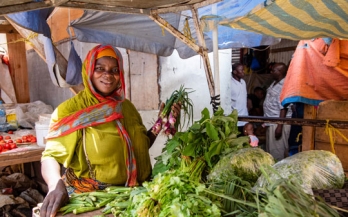- 07/08/2023
Lower-income populations in low- and middle-income countries (LMICs) often face challenges accessing affordable, desirable, safe, and nutritious food, contributing to poor diet quality and malnutrition.
- 20/07/2023
Lower-income populations in low- and middle-income countries (LMICs) often face challenges accessing affordable, desirable, safe, and nutritious food, contributing to poor diet quality and malnutrition. As the main source of food for the majority of this population, private-sector firms have the potential to play a key role in alleviating this – and if they can do profitably, could help their bottom line in the process.
- 05/07/2023
The objective of this paper is to describe the initial scaling-up phase of the 'Baduta' programme (Baduta 2), which aimed to support national stunting-reduction efforts in Indonesia through emotional demonstrations (‘emo demos’), reflecting on the challenges faced and ensuing lessons learned, following the promising results of the 2017 evaluation of the programme.
- 08/06/2023
Malnutrition is a major public health problem, for which global development assistance current falls far short of needs. As such, it is important to consider non-traditional sources and mechanisms to increase the funding available to support nutrition, particularly in low- and middle-income countries where the burden is highest.
- 11/04/2023
In 2019, in an effort to improve the efficiency and sustainability of its programming, GAIN’s Workforce Nutrition Programme (WFN) shifted away from the traditional project development and evaluation cycle towards a nimbler "Quality Improvement" (QI) approach.
- 21/04/2023
Micronutrient deficiencies (also known as hidden hunger) are a significant public health problem globally. Pre-pandemic estimates found 1 in 2 children and 2 in 3 women suffering from a micronutrient deficiency. Levels of deficiency are likely to be even higher today given the protracted global food crisis arising from the COVID pandemic and Russia’s invasion of Ukraine.
- 13/04/2023
This paper discusses the critical importance of expanding 'food systems infrastructure' as a necessary pre-condition for improving access to healthy and sustainable diets in low- and middle-income countries. It proposes a tractable definition of food systems infrastructure, highlights deficits that have yet to be addressed, and lays out a generic way forward to accelerate infrastructure accumulation.
- 23/03/2023
The review demonstrates that designing policies to holistically address underlying drivers of inequity would require data disaggregated at the level of relevant social groups, with adequate geographic granularity, as well as qualitative data from the perspectives of affected people spanning food environments, socioeconomic information, and the food security, nutrition, and health issues that policies target.
- 21/12/2022
In advance of the 2022 AGRF Summit, the Global Alliance for Improved Nutrition (GAIN) and AGRA produced a report to provide African leaders with cutting-edge data tools to do just this. This briefing paper summarises the main results of that effort.
- 09/11/2022
Climate change impacts and risks are becoming increasingly complex and more difficult to manage. Simultaneously, the world is facing the complex challenges of hunger and multiple forms of malnutrition.









